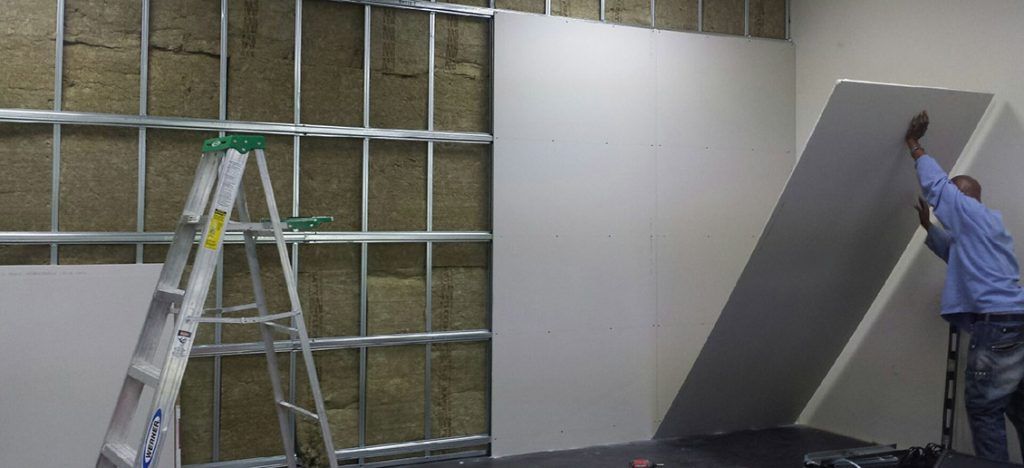You Tube provides a huge source of advice videos on any topic, including soundproofing. The videos you can find are of varied quality, from dubious or ridiculous, to good. Often it is difficult to recognize the difference.
More...
One of many soundproofing videos that I have come across is this one presented by a YouTube author:
NOTE: I WAS ASKED BY THE AUTHOR OF THE VIDEO TO REMOVE IT DUE TO "COPYRIGHT INFRINGEMENT". However, the video is still out there and the content of my article is unchanged.
The presenter covers many aspects of basement soundproofing quite well, but his explanations of physical principles are overly simplified and quite inaccurate [5:00]. He appears to know what he is doing, but there are still numerous omissions and errors in his instructions. If a homeowner or a contractor follows his advice, some important details may not be constructed properly, reducing the soundproofing effectiveness of the result.
Soundproofing errors
Here is a list of the errors or omissions in the presentation. Time reference in the video is shown in [square brackets].
[1:40] Sound Transmission Class (STC) explanation is very inaccurate. The author recommends referring to Wikipedia and he is right. Wikipedia description is accurate.
[3:21] The author suggests removing air ducts from ceiling and use in-floor heating. This suggestion is not practical, or necessary in most cases. Air-conditioning still needs to be done even if heating is in-floor. Noise transfer reduction through ducts can be done successfully and relatively cheaply, if done at the same time as rest of the renovations.
[6:15] The author states that Fiberglass is much cheaper than rock wool insulation. It is true that Fiberglas insulation is about half or third of the cost of rock wool insulation, but any insulation is only a small fraction of a project cost. His advice to use Fiberglass make sense only on low budget projects done by a homeowner himself. In most cases the additional cost of rock wool is quite small and worth the improved acoustical performance.
[6:40] The author's explanation of Green Glue function is completely incorrect. This noise reducing compound in fact creates damping effect in drywall, reducing vibration transfer.
[7:22] The author claims that no insulation in ceiling, with two layers of drywall with Green Glue, provides good sound insulation. This is incorrect, it only provides about 6 STC points better sound transmission than one layer of drywall. In my opinion, it is not worth the cost and effort, especially in new construction, as is demonstrated.
[8:56] The author inserts one layer of 3-inch insulation into the ceiling cavity. That is fine as a minimum. He does not tell you that by doubling the thickness of insulation, you can get an additional 2 to 3 STC points in sound attenuation.
[14:40] The author suggests using one or two tubes per every sheet of drywall. This is incorrect. Instruction for Green Glue clearly states that you should use two tubes per sheet, for best effectiveness.
[17:10] The author talks about “decoupling wall” when he talks about double wall system. This is somewhat misleading, because decoupling usually refers to resilient channels or resilient clips.
[19:20] The author illustrates a wall assembly with a layer of drywall inside, between two walls. It is completely wrong. The inside drywall should be removed. Leaving it reduces the sound attenuation of the wall by 5 to 10 STC points. This means that his 65 STC becomes 55 in reality.
[20:50) The author left a gap in the wall, saying that it does not matter. However, deficiencies are cumulative and each one matters. It does not take much effort to caulk the gap or fill it in with drywall compound.
[26:20] The author also leaves out another important point. Especially if you build a double wall, you need to resiliently attach the base plate and top plate of the wall. Then leave ¼-inch gap around perimeter of the drywall and caulk the gap with acoustical sealant.
Conclusion
Overall, the demonstration is quite good, the author knows what he is doing. He demonstrates a better job then done by a typical contractor who claims to do soundproofing. However, he is incorrect in many details and his result is not as effective as possible. It does not cost much more to get a proper advice and hire an expert, not just a self-proclaimed soundproofer.
I always welcome your feedback. Please fill in and submit the form below:
